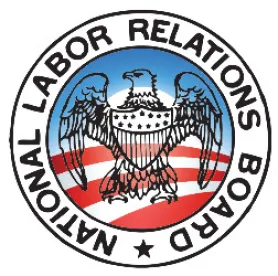The National Labor Relations Board (“NLRB” or “Board”) has issued its Election Protection Rule which makes changes regarding three important aspects of its representation election process and procedures. These changes, which take effect June 1, 2020, will remove “unnecessary barriers to the fair and expeditious resolution” of employees’ right of free choice regarding union representation through an NLRB-conducted secret ballot election, the Board stated.
Blocking Charge Policy. The Board’s new policy will change a process by which a union can prevent employees from voting whether they wish to have new union representation (representation election) or if they wish to continue being represented by the incumbent union (decertification election). The NLRB’s current practice allows a party—usually a union—to file an unfair labor practice charge which results in the postponement or denial of a secret-ballot election. Under the new rule, the Board will impound election ballots when a party files an unfair labor practice charge that alleges a party has interfered with the conduct of the election or has unlawfully coerced employees related to the election. In those situations, the Board will conduct a secret-ballot election then impound the ballots for up to 60 days after the election if (1) the charge has not been withdrawn or dismissed, or (2) if a complaint has not issued, prior to the conclusion of the election. If a complaint issues with respect to the charge at any time prior to expiration of that 60-day post-election period, the ballots shall continue to be impounded until there is a final determination regarding the charge and its effect, if any, on the election petition.
In addition, the 60-day impound period will not be extended, even if additional charges are filed, and although the filing of a blocking-charge request will not delay the conduct of an election it may delay the vote count or certification of the election results.
Voluntary Recognition Bar. This rule applies when an employer voluntarily recognizes a union instead of the more common situation where employees vote to have the union represent them. The old rule permitted an employer and a union to enter into an agreement for the union to represent employees even though there may be no evidence a majority of employees supported the union, much less voted for union representation. The new rule requires an employer to provide notice to employees that it has recognized the union. In addition, the rule requires:
-
The employer and/or the labor organization must notify the Regional Office that recognition has been granted;
-
The employer must post, in conspicuous places, including all places where notices to employees are customarily posted, a notice of recognition (provided by the Regional Office) informing employees that recognition has been granted and that they have a right to file a petition during a 45-day “window period” beginning on the date the notice is posted;
-
The employer must distribute to all employees in the petitioned-for unit the Board-approved notice; and
-
45 days from the posting date must pass without an election petition, with proper evidence of support by voting unit employees, being filed.
If all of these requirements are met, the voluntary recognition will be valid.
Section 9(a) Recognition in the Construction Industry. Finally, in a victory for construction contractors, the Board reversed its decision in Staunton Fuel & Material, 335 NLRB 717 (2001), holding that language alone cannot convert a Section 8(f) construction contract, terminable upon expiration, into a Section 9(a) agreement, where a presumption of majority support exists.
The majority of collective bargaining agreements are considered Section 9(a) agreements. Upon expiration of those agreements, employees who no longer desire union representation must file a decertification agreement with the Board. In contrast, construction agreements are Section 8(f) agreements. There, contractors can voluntarily recognize a labor union, even if they do not have employees and irrespective of their employee wishes. However, upon expiration of a Section 8(f) collective bargaining agreement, employers can terminate the agreement and simply walk away.
In Staunton Fuel, the Board held that language alone could convert a Section 8(f) construction agreement to a Section 9(a) agreement. To do so, there must be language where employers agreed that, upon a demonstration of support by the majority of bargaining unit employees, the employer has granted voluntary recognition to the union. For almost two decades, construction unions have engaged in “top down” organizing, where under the threat of a picket, they have forced contractors to sign a collective bargaining agreement with this language, even in the absence of authorization cards or other objective evidence of majority support by employees. When employers tried to walk away upon expiration (like they would with typical construction contracts), the Board did not allow them to do so, because the Section 8(f) contract was converted to a 9(a) agreement by that language. Employers were left with little choice; since they cannot persuade employees to decertify the union, they often were harnessed with collective bargaining agreements that none of their employees ever supported.
With this new rule, should a construction contractor try to walk away from a collective bargaining agreement upon expiration, a union will need to demonstrate that it had majority support from employees at the time that voluntary recognition was extended. In the absence of that affirmative proof, the Board no longer will convert these construction agreements to Section 9(a) agreements. This will impede Union efforts to engage in “top down” organizing, forcing them to obtain authorization cards from the majority of the proposed bargaining unit and/or petition for a union election so that it can enjoy the protections afforded by Section 9(a) agreements. While the new rule does not help contractors who have previously signed collective bargaining agreements with 9(a) language (since the rule does not become effective until June 1st), after that date unions will need to actually organize bargaining unit employees in the construction industry.
Employers seeking guidance regarding the specific impacts of these new rules on their employees and workplaces should consult their in-house or outside labor counsel.





 />i
/>i
